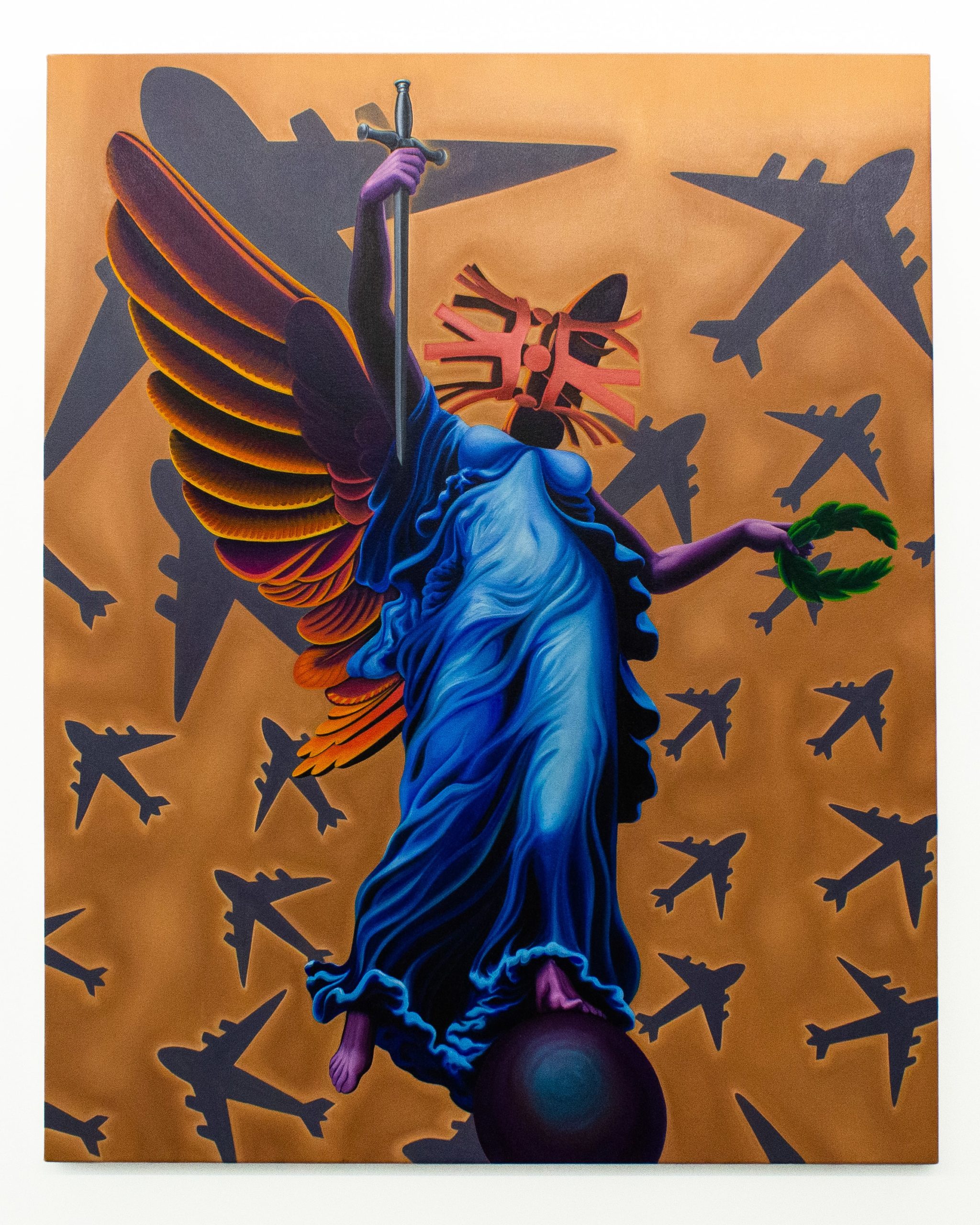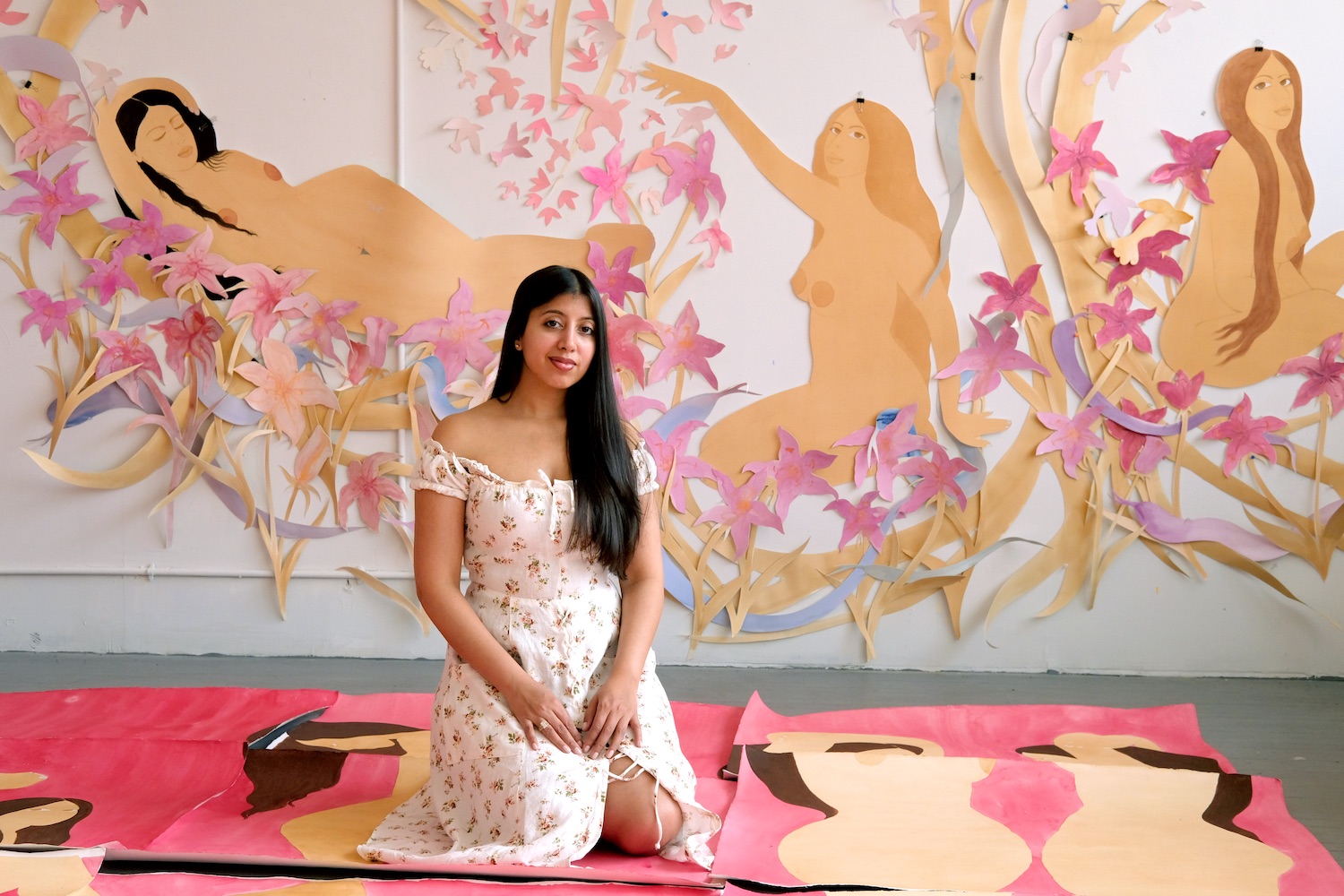Now on view at New York’s JDJ Tribeca is Lucia Love’s “Angel at the Wheel,” featuring a suite of new paintings. The work’s explore the push and pull between the individual and the collective, in turn shedding light on the very fluid nature of the truth. Born from an amalgamation of influences like Renaissance perspective, cubism, political structures, and recognizable symbolism and allegory, Love’s distinctive style has filled the gallery walls with vibrant, detailed, and tastefully satirical compositions that play on memory while inviting viewers them to ponder the underlying narrative.
Infused with bits and pieces of imagery like chiseled statues, the scales of Lady Justice, and angelic winged figures, the works in the show include Delicate Touch, the dualistic Night and Day, and St. George and the Dragon, in which the dragon bears the head of Walt Disney, accompanied by a grouping of vintage Mickey Mouse minions.To learn more about the exhibition (open through April 2), along with Love’s influences and practice, Whitewall spoke with the artist.
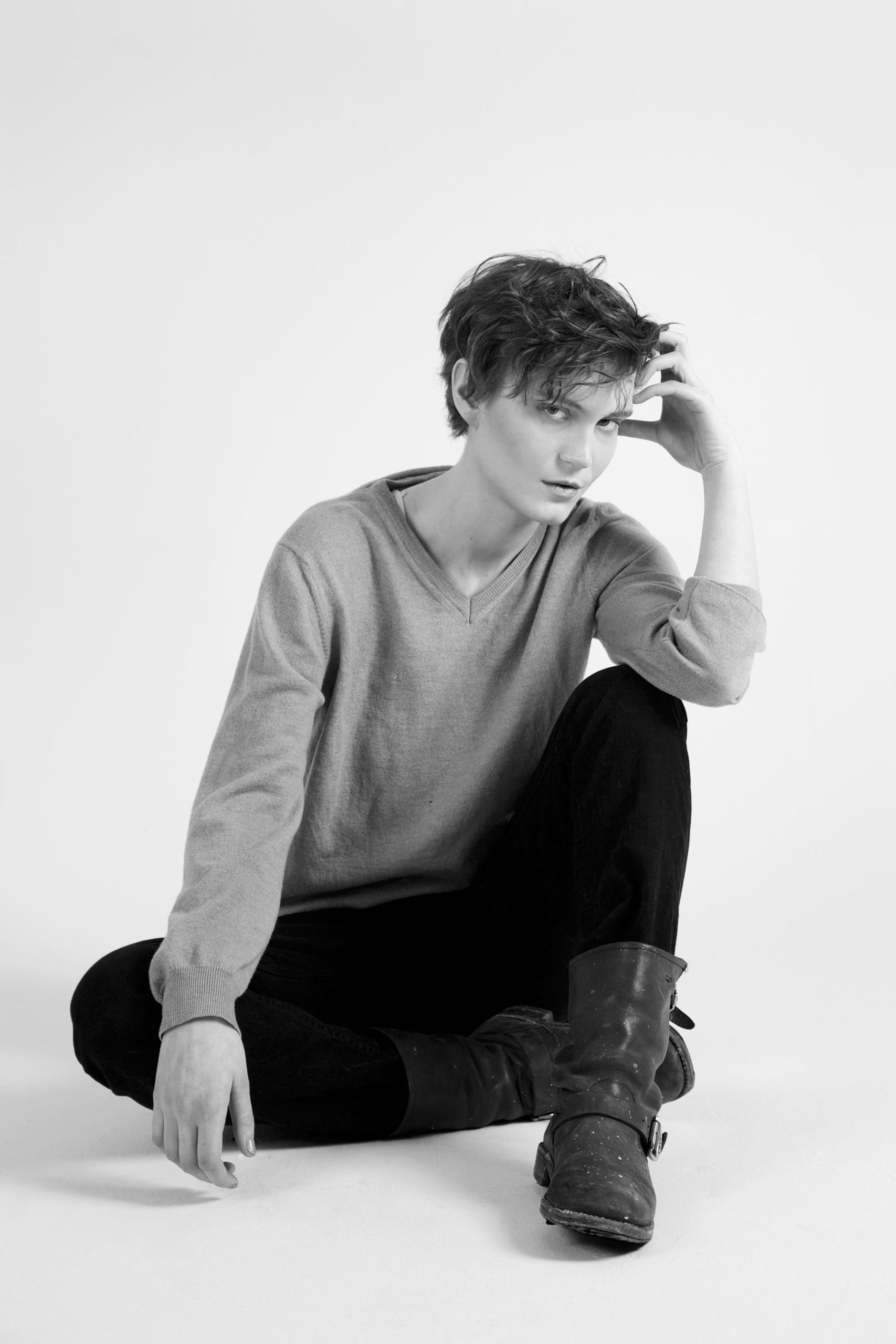
Portrait of Lucia Love courtesy of the artist.
WHITEWALL: What was the starting point for your exhibition at JDJ Tribeca?
LUCIA LOVE: The genesis of “Angel at The Wheel” began with contemplating the figure of winged victory brandishing her sword by the blade in what feels to be an omnipotent gesture of conditional peace. I couldn’t stop thinking about how skilled you’d have to be not to cut yourself, and began unpacking that feeling with Excelsior.
WW: Why did you choose Angel at The Wheel as your titular work?
LL: The canvas depicts an angel to the right of Napoleon so imperceivable, it is actually operating on a plane where space and time are anthropomorphic. Here it’s able to use time like a saw, tearing across the surrounding network, with these incisions rippling outward to form a vision of this historical figure. I chose to call the show “Angel at The Wheel” after this work because it sets cosmic parameters to the interplay of these figures. We can say history is created through the will of individuals, but that leaves out the multitudes who actually make the world turn, whose names and faces were not immortalized, but who nonetheless performed great and terrible feats in concert.
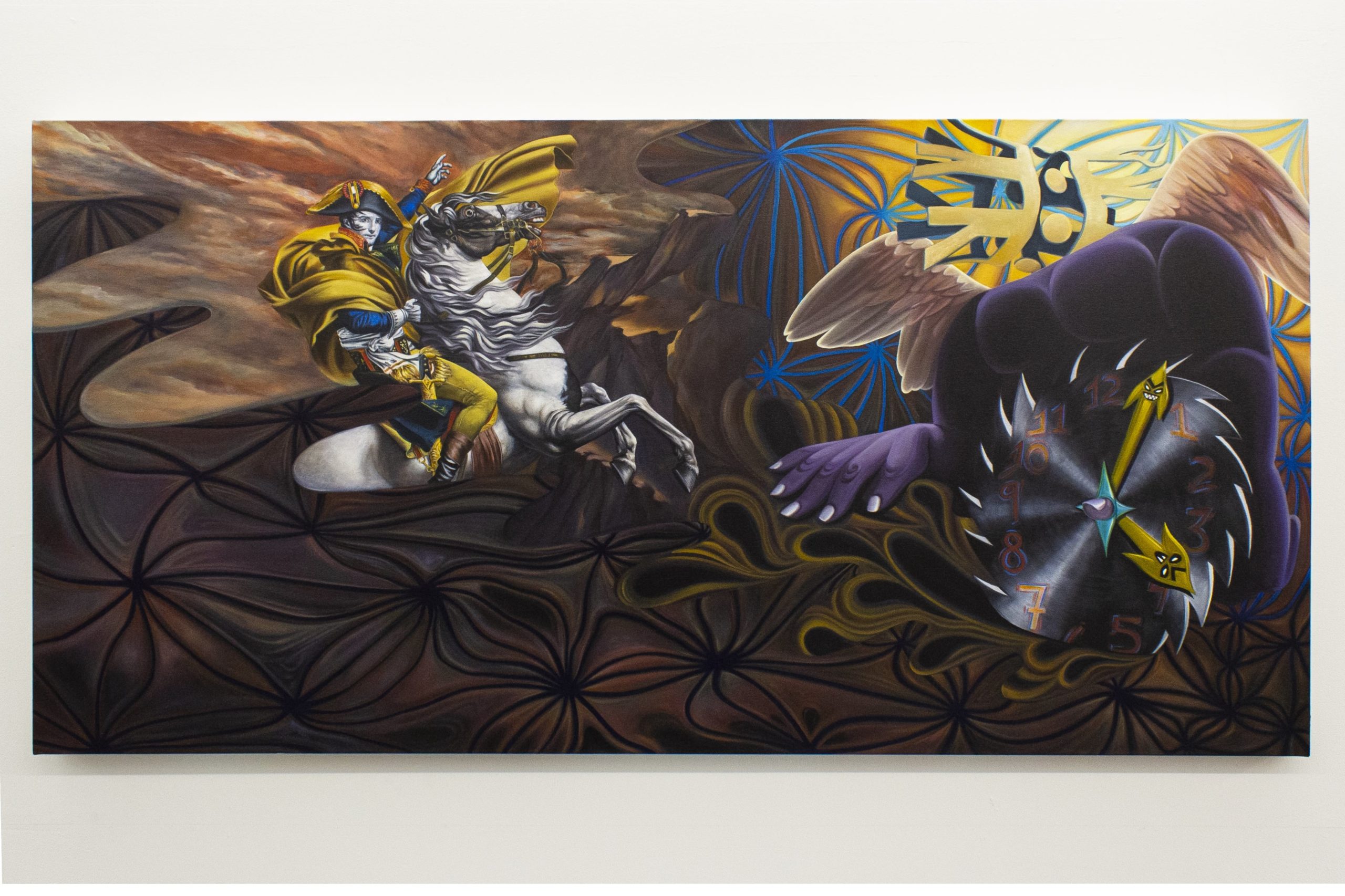
Lucia Love, “Angel at the Wheel,” 2022, Oil on canvas, 36 x 72 inches; courtesy of the artist and JDJ Tribeca.
WW: Emily Mae Smith’s description of your show mentions the “fluid, malleable nature of the truth.” In these works, how are you looking at ideas of the truth in connection to the current state of the world?
LL: Truth is fluid! In theory it’s liberating to realize this subjective value is in constant flux, though it can also make paranoiacs out of us all. That instability is another feeling I hope to evoke when depicting historical figures like Walt Disney slinking around through my fractured landscapes.
The deeper you look into his sordid sympathies and questionable business practices, the more corrupt the wholesome animation mogul’s portrait becomes, until he is revealed to be a monster in Saint George and The Dragon. This great reveal is often repeated by public figures no matter the era.
WW: The work Night and Day is almost like a painting of two paintings. Can you tell us about the story behind this composition and the two very different depictions of your subjects?
LL: Night and Day features a recurring character of mine called the Water Carrier done two ways. The Water Carrier has had a long arc of her own in previous paintings, but in short, she’s an absurdist depiction of the female body in bondage.
In the night panel on the left of this canvas, she is put in a predicament that is rather clear when you learn the brown shirted figure on either side of her is Wernher von Braun holding the shackles. Though von Braun was never convicted of war crimes, he was utilizing concentration camp labor to develop the secrets of rocket propulsion he eventually traded to the US. His gesture of placing the shackles half on, half off is an homage to this “plausible deniability,” caught in a clearly dubious act.
In the day panel, the Water Carrier can be seen lifted up by some angels who appear to be somewhat benevolent. She’s given a mask-like face, and a holy grail, but her surreal neck extending shackles aren’t removed. This two-panel composition combined is an effort to show that the past is not gone or forgotten, though the elements of struggle may be reframed.
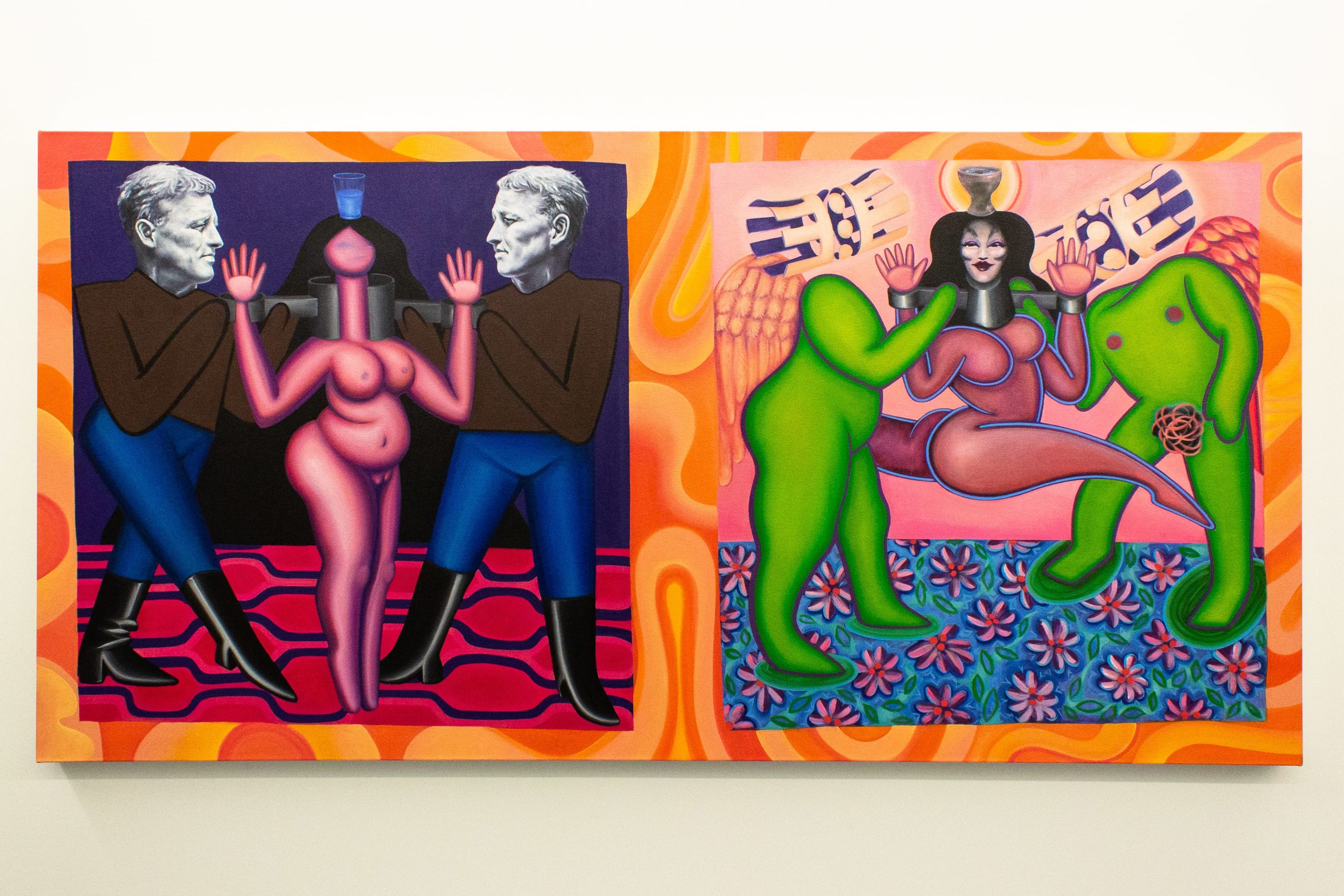
Lucia Love, “Night and Day,” 2022, Oil on canvas, 36 x 72 inches; courtesy of the artist and JDJ Tribeca.
WW: The struggles that occur from the relationship between the individual and the collective is a topic of interest for you. What are some of the issues you see prominent within this relationship today?
LL: Politics that center the individual are more likely to offer clear pathways to representation in the market, than for striving towards common goals in the system we’re currently existing in. At a time when our survival depends on making massive changes to avert global catastrophe, we are finding ourselves entangled in issues of nationalism, classism, racism, sexism, etc. that are exacerbated by shortsighted profiteers. It is easy to become isolated when seeing the world through a lens of personal struggle, and to forget that many revolutionary changes happened when coalitions were formed amongst people with disparate backgrounds who nonetheless came to share the same vision.
WW: The meaning behind these recognizable figures and icons you’ve depicted is shifted when they’re twisted and remixed in your compositions. How do you go about unfolding and investigating your subject matter while also paying respect to the origin of the references chosen? How do you see the use of satire in relation to your work?
LL: Conscious attempts at satire are surprisingly lacking in my work. I think of satire as a kind of “gotcha” mechanism, but I’m working from an earnest place where I try not to exaggerate any of the facial gestures of a subject, even if the bodies they’re connected to are simplified for the sake of communication. It would be hard for me to place a figure in a scene without thinking of how I understand their character for instance.
The surreal or cartoonish elements of my work are more of a shorthand for connecting ideas the figures represent to mythologies that I’m attempting to illuminate, and for adding a mystifying layer to what can be considered real. Of course, it helps to pick and choose how to depict more gruesome histories too, since adding critical distance is necessary to make frightening realities easier to contemplate.
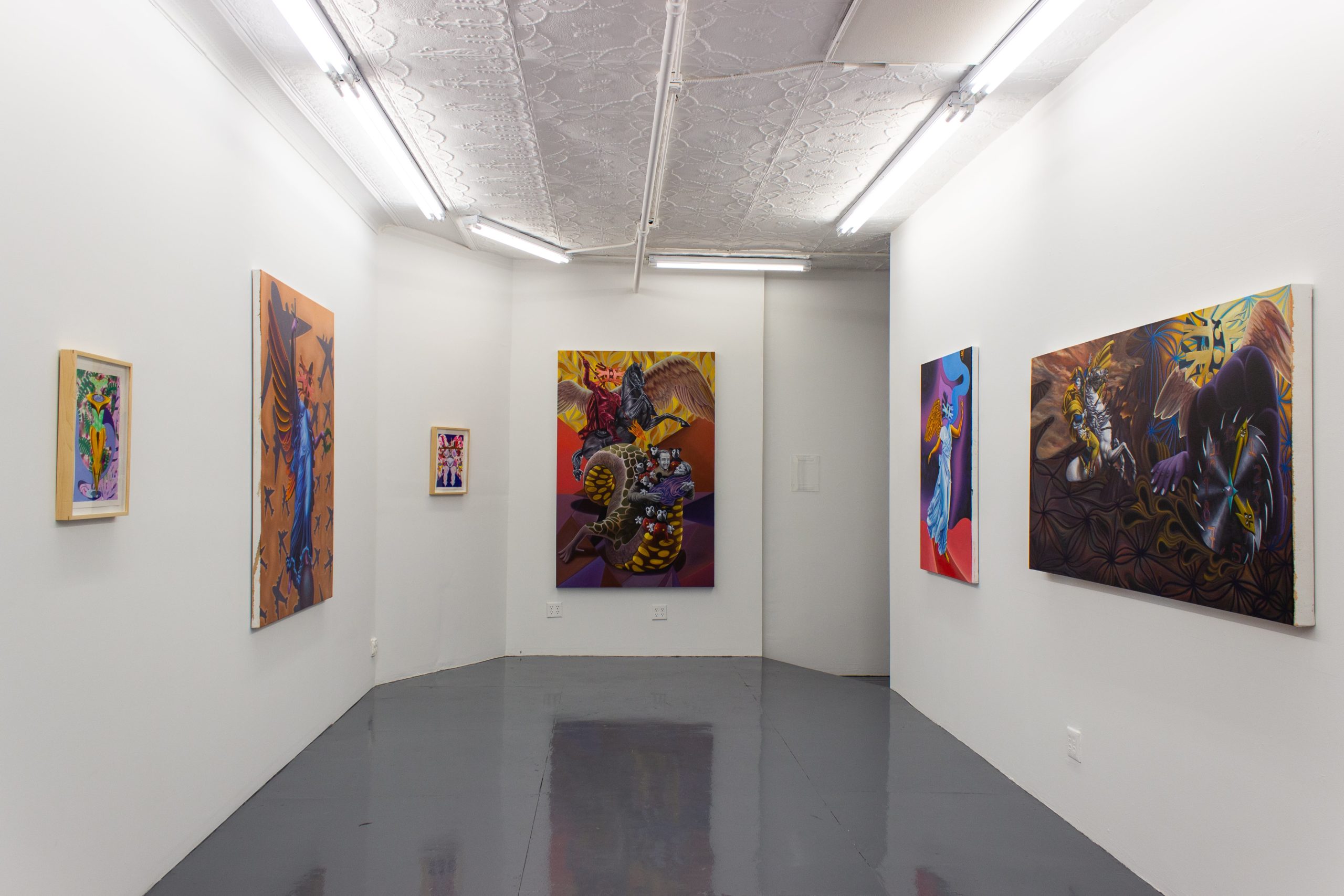
Lucia Love, installation view, “Angel at the Wheel,” courtesy of JDJ Tribeca.
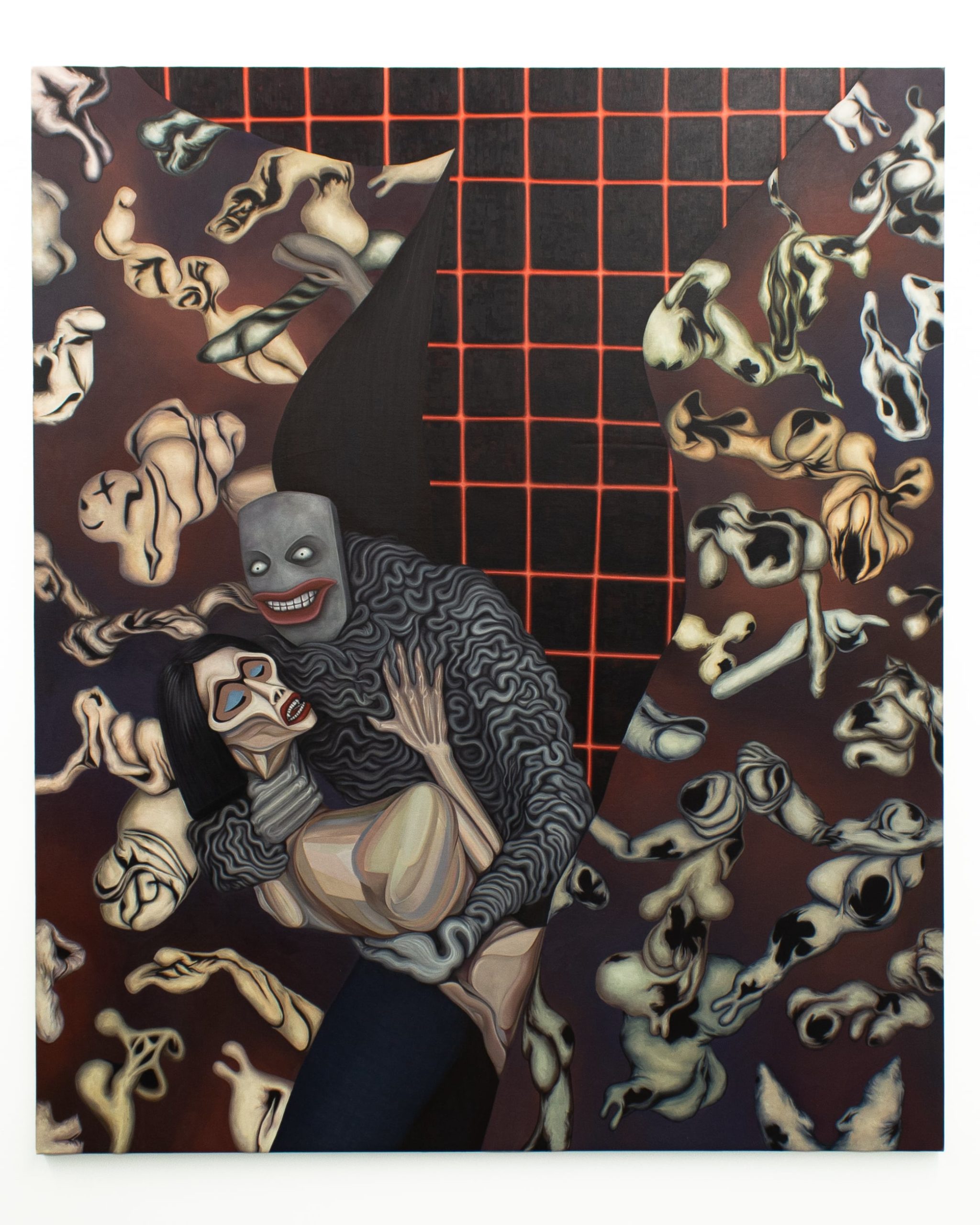
Lucia Love, “Fair Haven,” 2017, Oil on canvas, 72 x 60 inches; courtesy of the artist and JDJ Tribeca.



